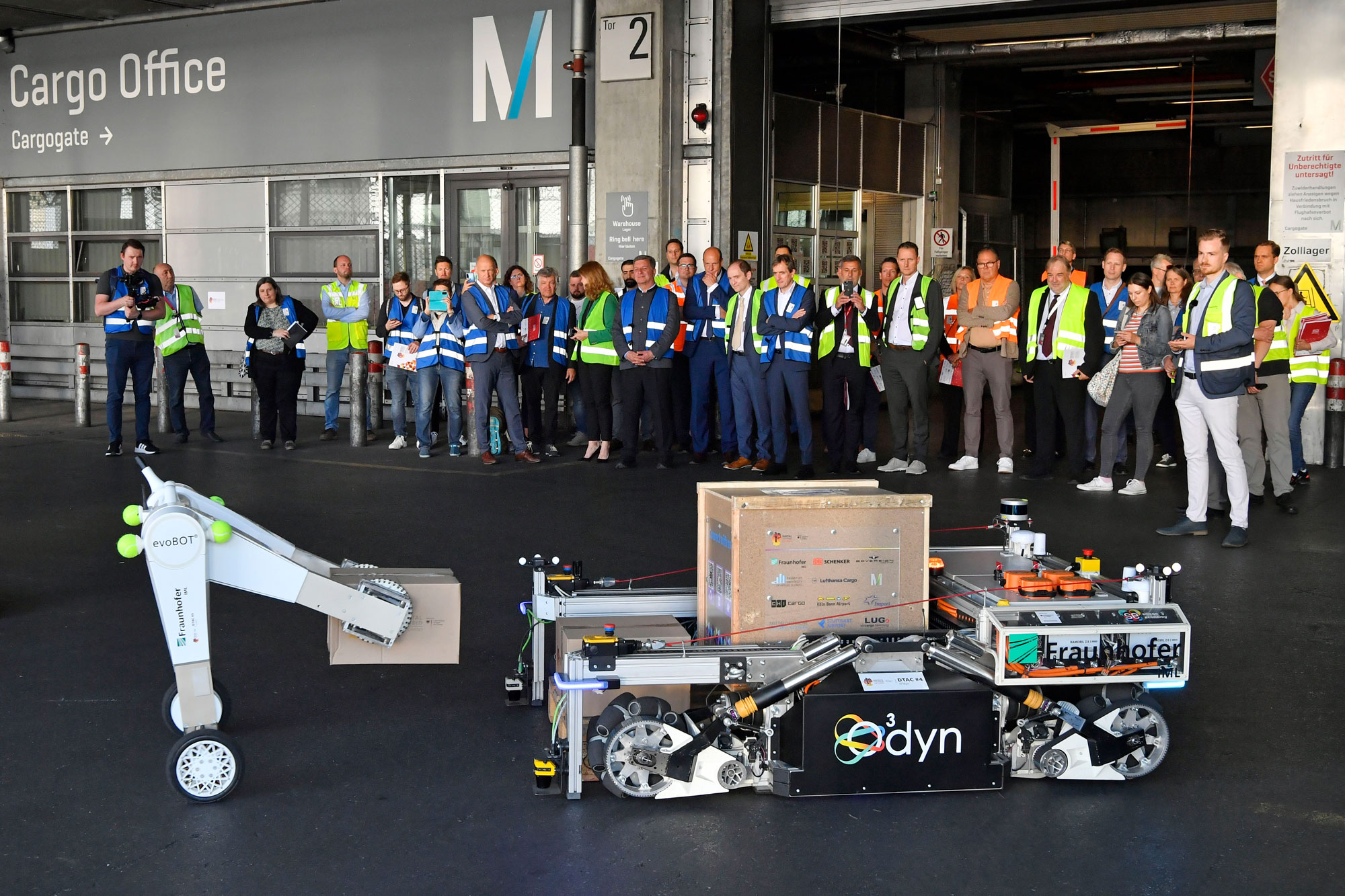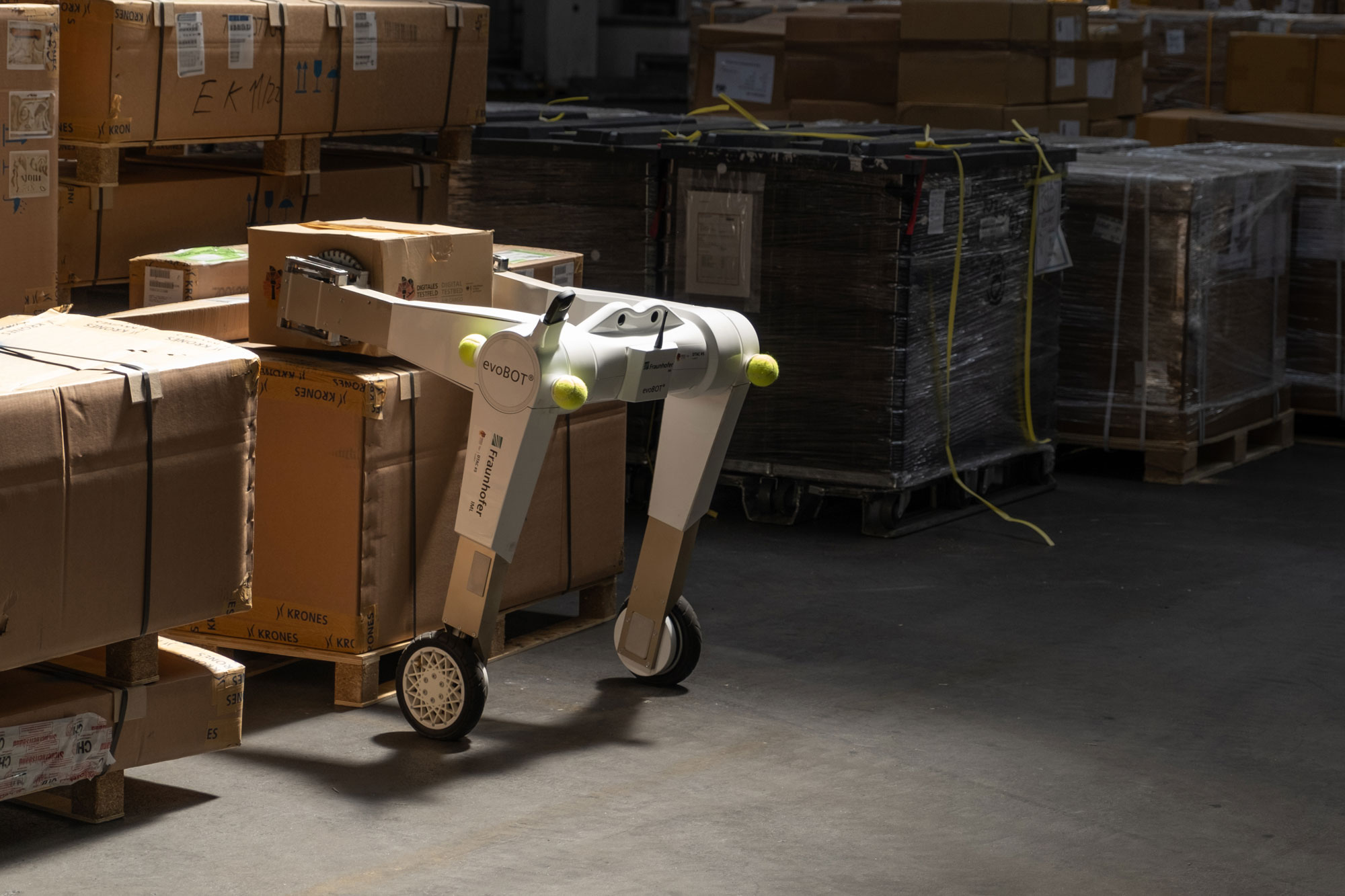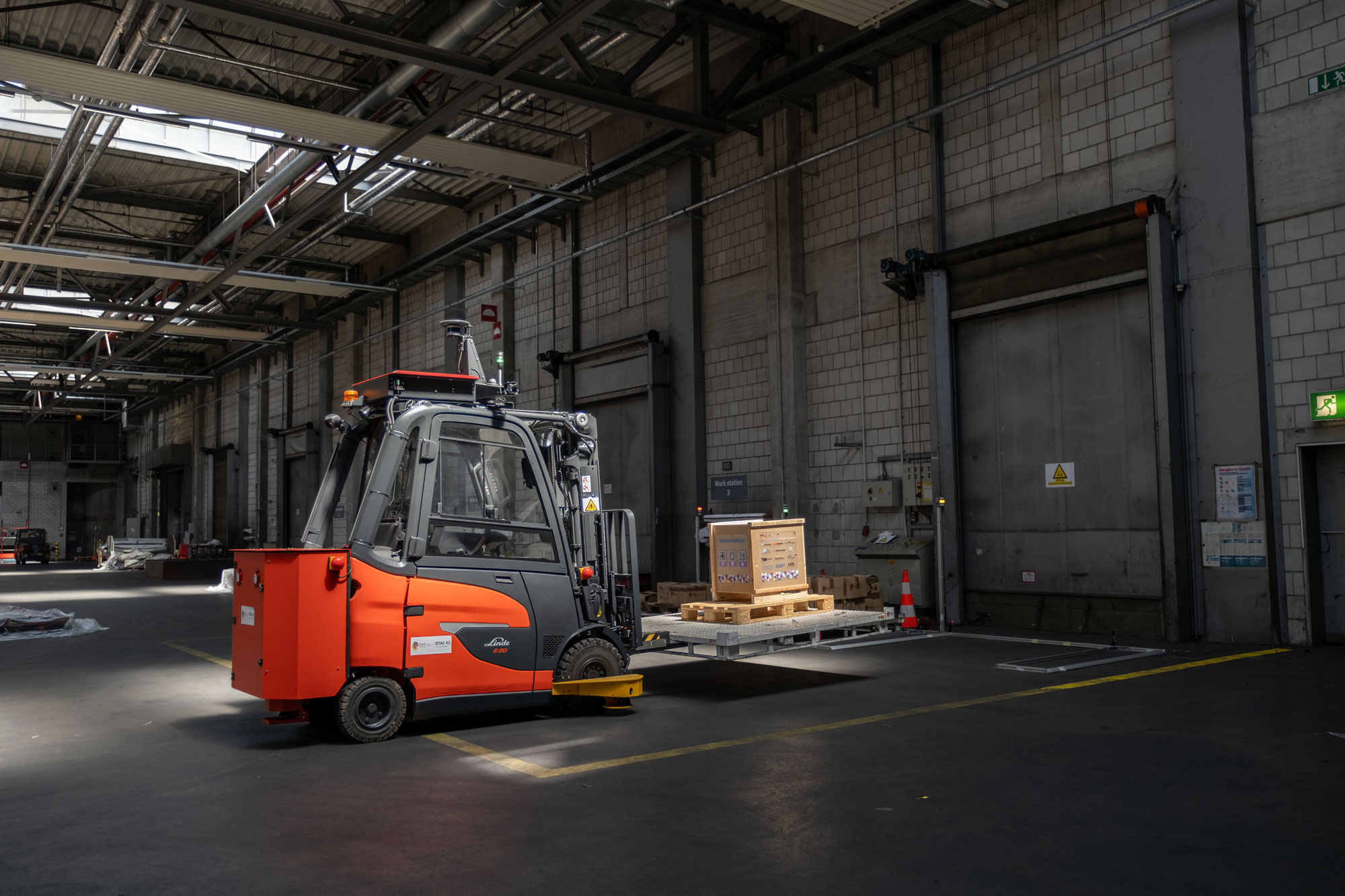A “robot dog” patroling autonomously through the warehouse looking for free storage locations, a highly dynamic transport robot that automatically moves pallets to their storage locations and a very flexible "segway robot" that places parcels from Euro-pallets onto a conveyor belt: Sounds like science fiction? But it's not, as researchers from Fraunhofer IML have now demonstrated to the public for the first time at Munich Airport. Together with Frankfurt University of Applied Sciences, the insurance company KRAVAG and the industrial partners at Munich Airport (Cargogate, CHI, Sovereign Speed and DB Schenker), they presented the first concrete results of the "Digital Testbed Air Cargo" (DTAC) research project.
"This was a convincing demonstration that shows that we are very well prepared forcurrent and future challenges. This is particularly important in the air cargo industry. The industry has to manage the split between shortage of staff on the one hand and high throughput rates on the other. This will only be successful if we make use of all the technological developments available to us for process optimization", Christian Bernreiter, Bavarian State Minister for Housing, Construction and Transport, emphasized.
Dr. Jan-Henrik Andersson, Chief Commercial Officer & Chief Security Officer of Munich Airport, was also very positive about the research results to date: “The cooperation between Fraunhofer IML and Munich Airport is future-oriented. Considering the increasing volume of air cargo and the staff recruitment challenges, digitalization and robotics will help us make cargo and baggage handling more efficient and jobs in these areas more attractive in the near future"
The DTAC project, which is funded by the German Federal Ministry for Digital and Transport with around 7 million euros and will run until September 2024, is focusing on the question of how the efficiency and performance of the air freight transportchain can be optimized. This is to be achieved through better networking and digitalization of processes. During the demonstration of the project in Munich, several autonomous and automated devices were successfully used to either completely take over some very labor-intensive and repetitive steps at relevant interfaces in the handling process or to support employees in their physically demanding work. Robots working in very different ways were given key roles.
The "robot dog" Spot from US manufacturer Boston Dynamics, equipped with a scanner and 4K camera, patrolled the warehouse autonomously and identified large storage pallets ready for storage and the corresponding storage locations. An autonomously operating forklift took over the intermediate transport to the automated high-bay warehouse and the omnidirectional, highly dynamic robot O³dyn developed by Fraunhofer IML was responsible for transporting Euro-pallets to a neighboring warehouse.
The evoBOT, also developed by Fraunhofer IML - a dynamically stable system with two gripper arms based on the principle of an inverse pendulum and requiring no external counterweight - placed packages from an Euro-pallet onto the conveyor belt of an X�ray machine and back onto the pallet after the X-ray process. These processes were steered via the Fraunhofer control system software "openTCS" - a low-threshold tool for coordinating automated guided vehicles (AGVs)
Even if not all process steps were fully autonomous during the demonstration that took place at Munich Airport and some processes were controlled manually, the researchers believe that the degree of automation in air cargo handling will increase rapidly. "On the hardware side, as today has clearly shown, we are already well advanced. In the future, artificial intelligence will support us in coordinating and controlling the vehicles. It will provide the necessary tools and algorithms with which we can precalculate the routes of the autonomous robots and safely avoid collisions. Ultimately, we will soon have fully autonomous systems that will make the air cargo industry fit for the future," Prof. Michael Henke, Executive Director of Fraunhofer IML, summarized.
 Fraunhofer Institute for Material Flow and Logistics IML
Fraunhofer Institute for Material Flow and Logistics IML



